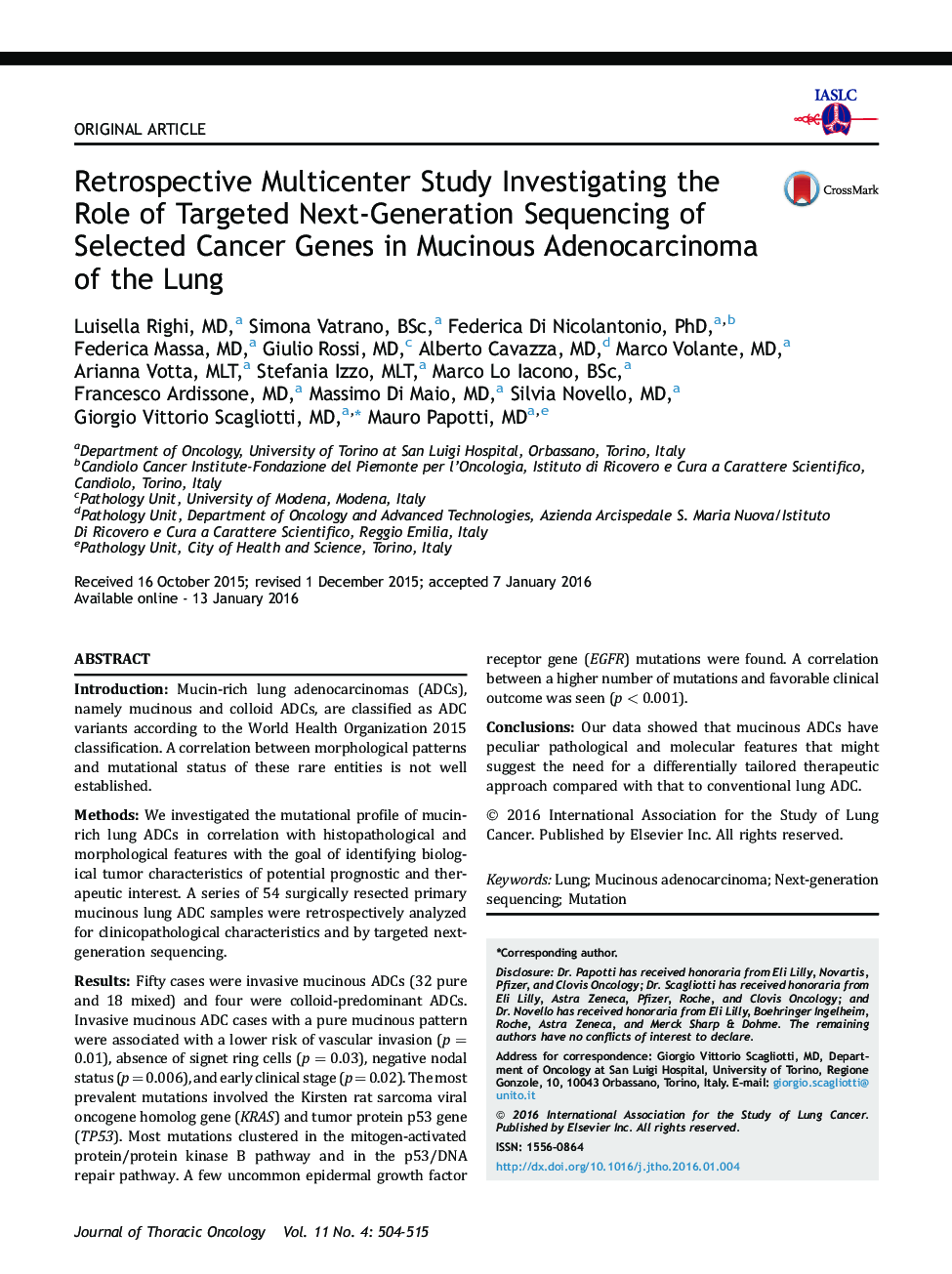| Article ID | Journal | Published Year | Pages | File Type |
|---|---|---|---|---|
| 6192730 | Journal of Thoracic Oncology | 2016 | 12 Pages |
IntroductionMucin-rich lung adenocarcinomas (ADCs), namely mucinous and colloid ADCs, are classified as ADC variants according to the World Health Organization 2015 classification. A correlation between morphological patterns and mutational status of these rare entities is not well established.MethodsWe investigated the mutational profile of mucin-rich lung ADCs in correlation with histopathological and morphological features with the goal of identifying biological tumor characteristics of potential prognostic and therapeutic interest. A series of 54 surgically resected primary mucinous lung ADC samples were retrospectively analyzed for clinicopathological characteristics and by targeted next-generation sequencing.ResultsFifty cases were invasive mucinous ADCs (32 pure and 18 mixed) and four were colloid-predominant ADCs. Invasive mucinous ADC cases with a pure mucinous pattern were associated with a lower risk of vascular invasion (p = 0.01), absence of signet ring cells (p = 0.03), negative nodal status (p = 0.006), and early clinical stage (p = 0.02). The most prevalent mutations involved the Kirsten rat sarcoma viral oncogene homolog gene (KRAS) and tumor protein p53 gene (TP53). Most mutations clustered in the mitogen-activated protein/protein kinase B pathway and in the p53/DNA repair pathway. A few uncommon epidermal growth factor receptor gene (EGFR) mutations were found. A correlation between a higher number of mutations and favorable clinical outcome was seen (p < 0.001).ConclusionsOur data showed that mucinous ADCs have peculiar pathological and molecular features that might suggest the need for a differentially tailored therapeutic approach compared with that to conventional lung ADC.
